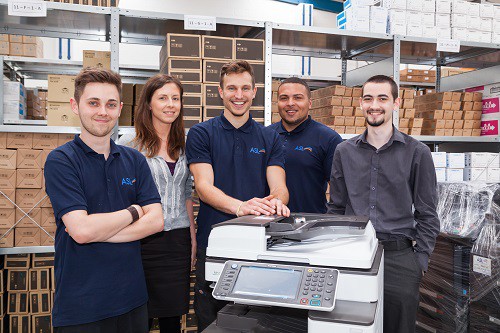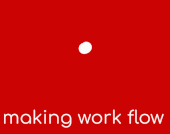Many people do not realise how long computer printers have existed for. While early office printers were obviously nowhere near as sophisticated as the printers we use today, it’s still astounding to think that computer printers were being developed way back in the 1930s. It’s taken almost 80 years for office printers to evolve to where they are today, so let’s take a look back at the history of printing to find out how we got here.
The birth of Xerox

1938: The history of printing begins in 1938 when Chester Carlson invented electrophotography, which is the dry printing process we know today as a Xerox. This device paved the way for later laser printers, including the world’s first laser printer, EARS.
The age of discovery
1953: Remington-Rand developed the world’s first high-speed printer, to be used with the Univac computer.
1957: IBM markets the world’s first dot matrix printer. This is also the same year that the dye-sublimation printer is first sold.
1969: EARS, the world’s first laser printer, was developed at the Xerox Palo Alto Research Center. The EARS printer took the electrophotography technology of the Xerox copier and added a laser beam to it.
Commercial/office printing takes off
1976: A huge landmark in the history of office printing, this year IBM installed the first IBM 3000 Printing System in the accounting office of F.W. Woolworth. The IBM 3000 was the world’s first high-speed laser printer, operating at speeds exceeding 100 prints per minute. This was the first office printer to fuse electrophotography and laser technology.
1977: Just a year later, the world’s first xerographic laser printer was developed. The Xerox 9700 Electronic Printing System, which has clear historical roots in the EARS printer, was one of the first printers to make use of modern techniques including page-formatting software and laser scanning optics.
1984: Hewlett-Packard release the LaserJet laser printer for $3,600. Apple release the Laser Writer just one year later. Throughout the 80s and 90s, office printer technology takes off, and laser printers quickly become better, cheaper, and more readily available to all kinds of businesses.
1992: The LaserJet 4 printer was marketed by Hewlett-Packard. This is the first laser printer to offer a resolution of 600 x 600 dots per inch, a huge increase on earlier laser office printers.
The rise of home printers

1998: While the first inkjet printer actually came on to the market in 1976, the initial product failed to make waves. However, in 1998, Hewlett-Packard released the Deskjet Inkjet printer, which became hugely popular in the home consumer market. It sold for a mind-blowing £700.
Inkjet printers have, of course, become much cheaper since 1998, and are now a staple in home offices around the world. While the printing quality of inkjet printers doesn’t match that of laser printers or toner printers, they successfully fill the gap in the market for low-cost home printers to this day.
Modern printing

Today, we use a variety of office printers – toner, laser and inkjet – which can all be traced back to these early inventions. Consumer home printing is now increasingly common, with many homes in the western world owning at least one printer, while laser and toner printers are still used by most big businesses and companies.
Technology is still moving on every year; many modern office printers can now communicate with other media such as software or memory sticks via Bluetooth and Wi-Fi, and the rise of 3D printing is currently changing the limits of what we, as a society, think that printing can do.
Interested in taking advantage of the best modern printing methods for your business? Get in touch with ASL Group today to find out how our managed print services could help you: https://asl-group.co.uk/contact


